Kieran Thompson: In His Own Words
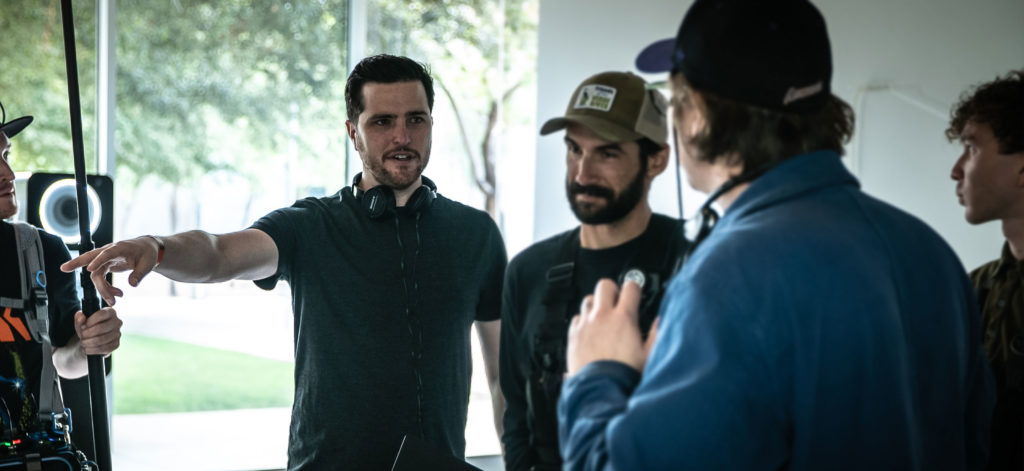
Dec, 01, 2020
ArtistsCommunityPhxArtist Spotlight
Kieran Thompson: In His Own Words
Kieran Thompson made his first film when he was 10, and he hasn’t put down the camera since. With his work, he exposes human existence for all that it is—as complex and fragile, scary and beautiful—yielding experiences that require everyone involved, from the cast and crew to diverse audiences, to tap into a place of vulnerability and introspection.
To hone this particular directorial vision, Kieran attended the Scottsdale School of Film+Theatre, followed by The Los Angeles Film School. After graduation, however, he immediately took up work as an unpaid production intern before moving up the ranks in the production department to help pay the bills. Still, Kieran has always made time and space to direct films, music videos, and commercials to realize the heartfelt stories of humanity he wishes to share with the world.
In 2018, Kieran, a proud Phoenician, began a two-year collaborative project with Phoenix Art Museum, working with a crew and cast of Arizona-based filmmakers and actors to produce a short film for a three-part series in celebration of the Museum’s 60-year history. On December 4, Wish You Were There, the series’ second film that was directed by Kieran and written by Chris Heck, will premiere on phxart.org, Short of the Week, and Omeleto, following its world premiere earlier this year at the Sedona International Film Festival. The Museum’s final and third film, Represent, will be shared with Museum audiences in February.
Through this latest film project with the Museum, Kieran and his team seek to illustrate the power of art to create tender moments rooted in memory, connection, and love. Learn more about the art of filmmaking from Kieran Thompson in his own words, and save the date for Wish You Were There, premiering here on December 4.
“I love films that embrace naturalism, with lived-in performances and observational, almost documentary-style, camerawork. I love the feeling that I’m watching real life unfold before me.”
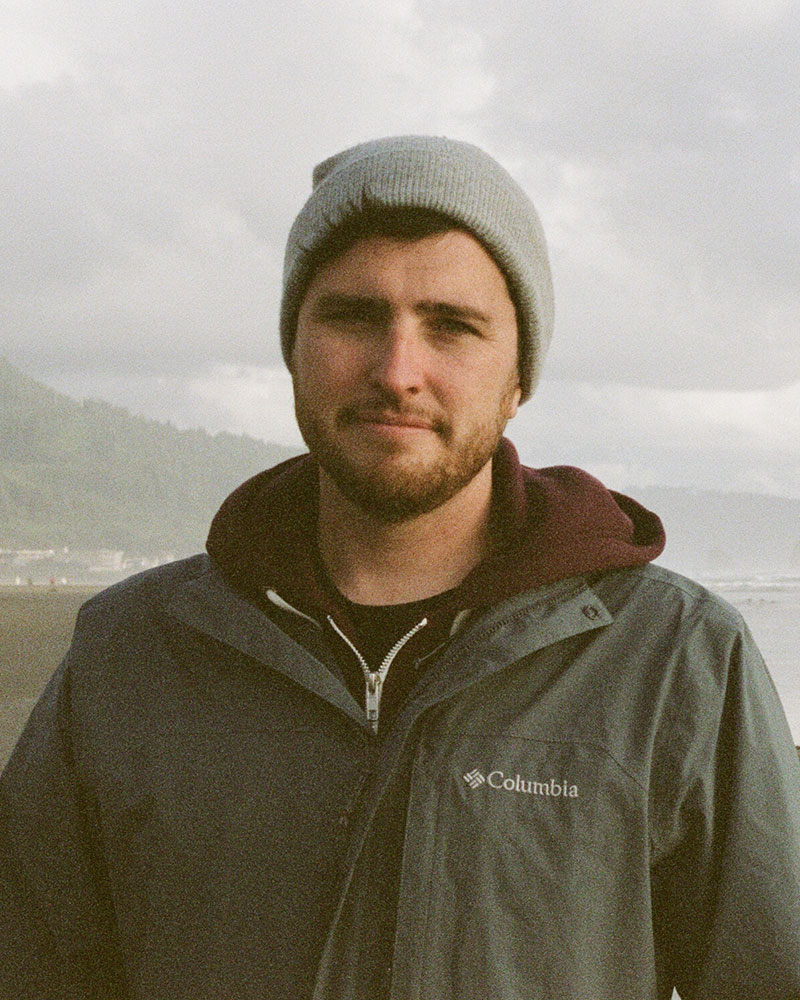
Kieran Thompson. Courtesy of Samantha Thompson.
PhxArt: What inspired you to become a filmmaker?
Kieran Thompson: Honestly, I have no idea. I’ve wanted to make movies for as long as I can remember. At my 10th birthday party, I directed my first short film called It From the Pit, based on a board game I was playing with my friends at the time. We grabbed my parents’ VHS camera and just went for it. Then in 7th grade, I directed little short films for our school video announcements. My teacher and mentor Mr. Green told me, “You realize people do this for a living, right?” Ever since then, that was the plan.
I recently watched It From the Pit actually, and it’s surprisingly better than I imagined it would be. There’s a beauty in the innocence of making movies with your friends, and I’m trying to carry on that feeling into my current work.
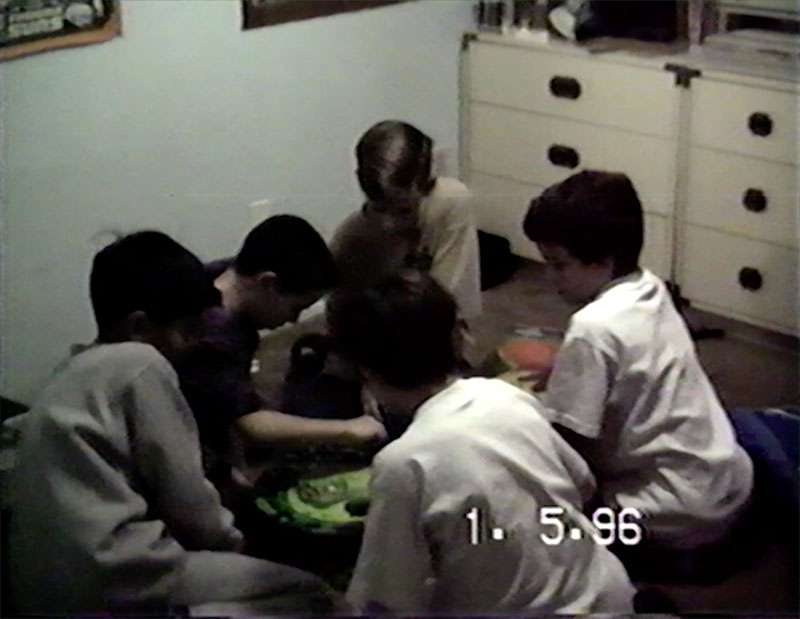
It From the Pit (1996). Film still. Courtesy of the artist.
PhxArt: Is film your primary medium? In which genres do you primarily work?
Thompson: The medium of film is my one true love. Someone once said, “Film is the art with the most expensive canvas,” and it’s so true. Film requires a lot of people and equipment, and even though it’s more accessible than ever (especially more accessible than when I was growing up), it’s not something I can really do at home by myself. So I cherish any opportunity to be able to make a film.
Genre wise, I love dramas, but I feel like life does not exist without comedy. So any story I tell will always have a bit of comedy sprinkled in. I love films that embrace naturalism, with lived-in performances and observational, almost documentary-style, camerawork. I love the feeling that I’m watching real life unfold before me. In one of your previous spotlight interviews with Chris Heck, he said, “I think filmmakers tend to fall into one of two camps: capturing reality or creating a fantasy.” He’s a fantasy guy, and I’m the one trying to capture reality.
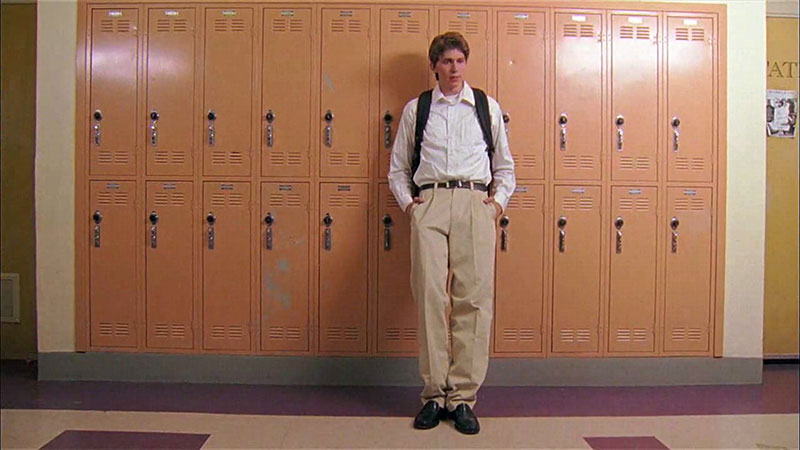
Caleb Couldn’t Love (2008). Film still. Courtesy of the artist.
PhxArt: How did you first become interested in drama films?
Thompson: I love a film that shakes me to my core, that creates empathy for the characters, that makes me feel like I’m really in someone else’s shoes. I wasn’t exposed to films like that until college, though. Growing up my favorite films were The Mighty Ducks and things of that nature. It wasn’t until I saw The Royal Tenenbaums by Wes Anderson that I realized there was a whole different world of movies out there—that a film could be anything.
While I attended The Los Angeles Film School, every Friday they screened important films from history. Being exposed to that type of work really expanded my horizons and showed me what’s out there and what’s possible.
PhxArt: Who are your greatest artistic influences?
Thompson: Wes Anderson was a big influence in my early days, not because I want my films to look and feel like his (I love his work) but because he taught me to create films using your own personal language. He makes films the only way he really knows how. Many people have tried to imitate him, and they can’t because it’s his language, not theirs. I’ve spent my whole life trying to figure out what my cinematic language is, what the type of stories I want to tell are. I’ve learned more about myself and filmmaking with each film I make, and I’d say Wish You Were There, the second in the Phoenix Art Museum film series that will premiere on December 4, is the closest to my vision yet.
PhxArt: Have you watched any films recently that have inspired you?
Thompson: Spending most of my time at home this year has allowed me to watch a ton of movies, all of which I track on Letterboxd. It’s impossible to list them all, but some of my favorite filmmakers/films right now are François Truffaut (Day For Night, 400 Blows), Chloé Zhao (The Rider, Nomadland), Richard Linklater (The Before Trilogy), Kelly Reichardt (Old Joy, First Cow), Darius Marder (Sound of Metal), Alma Har’el (Honey Boy), Terrence Malick (Days of Heaven, A Hidden Life), Spike Jones (Her), Greta Gerwig (Lady Bird), David Lowery (A Ghost Story), Noah Baumbach (Marriage Story), David Gordon Green (All the Real Girls), Andrea Arnold (American Honey), and Wes Anderson (Darjeeling Limited, Rushmore).
PhxArt: For most people, the art of filmmaking is as much a fantasy world as the films themselves. What is it like to be a filmmaker, and what would surprise people to know about the art and process of it?
Thompson: Quite frankly, it’s really hard to be a filmmaker. Only so many people get to do it, and it’s very challenging to bring a film to life. My next feature-film script has been in the works for five years, and we’re really only at the beginning of that journey. Then there is the pre-production phase, which is months and months. And then it usually takes one to two months to film a feature, followed by a year or more to do the editing, sound, and everything else involved in post-production. It may be surprising to find out that even the artists you love struggle for years to get a film off the ground.
One of my teachers in film school, Diana Lesmez, told me, “Every film is a miracle.” And it’s true. Every film you watch required a lot of hard work to get made. Keep that in mind while watching films, and you may appreciate them a bit more.
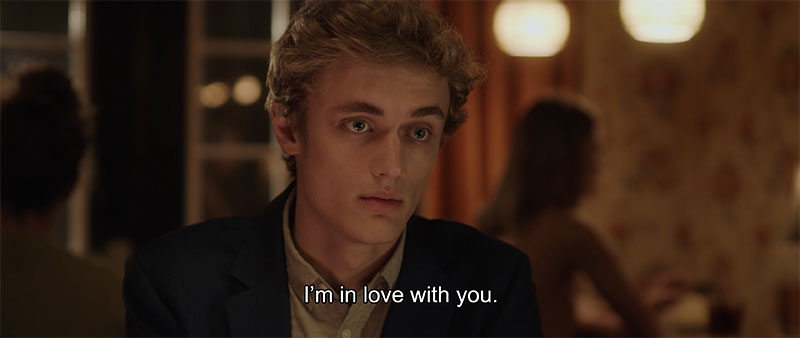
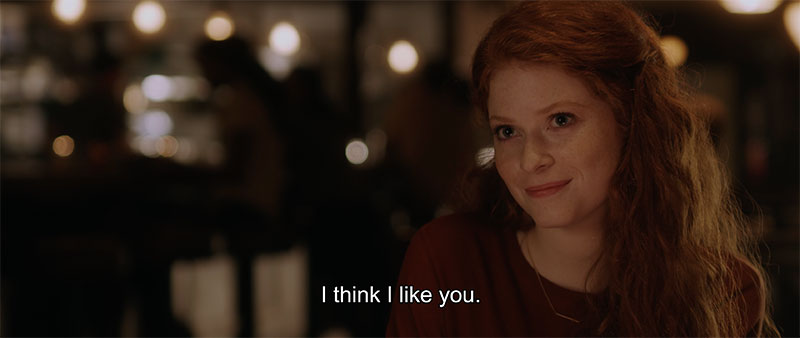
Between the Lines (2018). Film still. Courtesy of the artist.
PhxArt: What about the collaborative aspect of filmmaking? How has working with other creatives in your industry helped to evolve your work as a director?
Thompson: The collaborative aspect of filmmaking is why I love this medium so much. I cannot make movies alone. The best directors surround themselves with a team of people who are better than they are at their individual roles. That dynamic elevates everything.
I always go into a project with a clear directorial goal—I know what I want the audience to feel when they walk out of the theater. The first thing I do is communicate that vision with every member of my crew, and then their talents bring the film to life in ways that I could never imagine. Actors, producers, cinematographers, make-up and costume artists, editors, production assistants—it doesn’t matter the role. Everyone has a unique talent that I don’t have, but together, we can make something powerful.
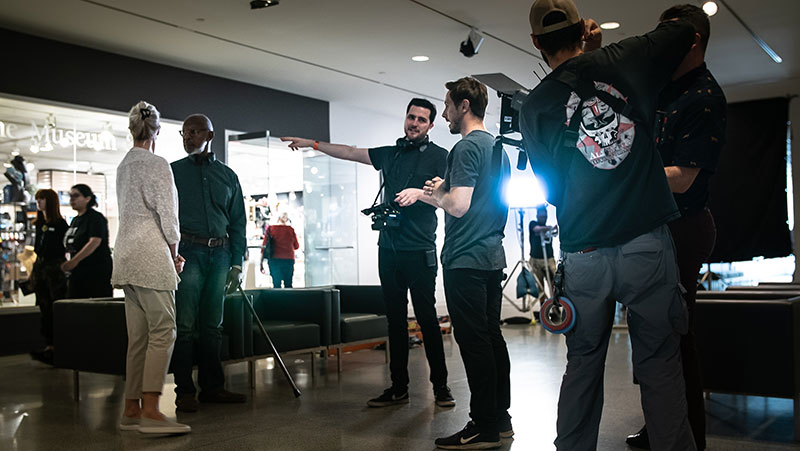
Behind the scenes of Wish You Where There. Courtesy of Miguel Norigenna.
PhxArt: In addition to directing your own films, what other roles have you played on the production team or otherwise that have influenced your approach to filmmaking?
Thompson: I’ve spent most of my working life on the production side of films, TV shows, commercials, and music videos. It gives me a front-row seat to watch other directors at work, and that access gives me a lot of insight. It’s also helped me develop an understanding of every department, how they do their jobs, how hard their work is, and what things cost. I try to keep all of that in mind when asking my crew to do something.
PhxArt: What was it like directing a film for Phoenix Art Museum?
Thompson: It was an absolute pleasure. The Museum had their goal of telling stories that could take place in the galleries while highlighting people that are often overlooked. But they gave us so much creative freedom that it really felt like Wish You Were There was a personal passion project. We began with a brilliant script from Chris Heck, and from there, I was able to put my heart and soul into it. We were able to make something we’re really proud of, with a very specific voice and intention.
That work and vision go a long way, and others have recognized that. We premiered Wish You Were There at the Sedona International Film Festival earlier this year and are also Official Selections of the Phoenix Film Festival and Arizona Short Film Festival. The film will next premiere online on Short of the Week and Omeleto on December 4. These are two prestigious online film festivals that will bring our film to a worldwide audience. This experience is something we as filmmakers truly hope for.
I applaud the Museum for giving artists the opportunity to create art, rather than spending the money on traditional commercials to celebrate their 60th anniversary. I’ve been going to Phoenix Art Museum throughout my entire life, and it’s a privilege to have created a piece of art for them.
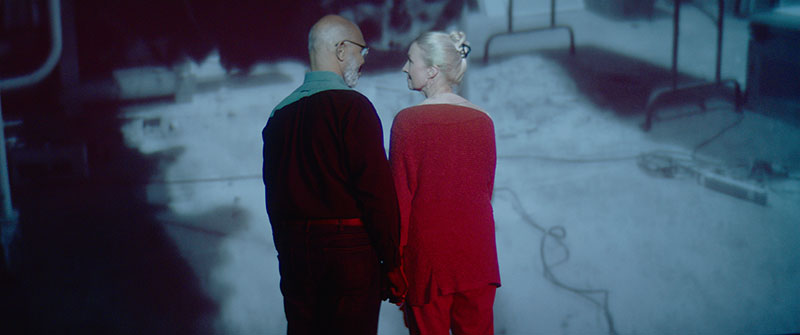
Wish You Were There (2020). Film still. Courtesy of the artist and Phoenix Art Museum.
PhxArt: Having completed this project with Phoenix Art Museum, what can our audiences expect to see from you in the year ahead?
Thompson: Writer Kyle Matthew Dickinson and I just finished the script for our next feature, The Only Way Out is Through. Joshua Gonzales, who produced Wish You Were There, is on board to produce this one, too. The film follows three men on a backpacking trip that gets derailed after an argument causes one to flee into the woods, sending the other two on a journey to find him and to discover the true value of their friendship. It’s a deeply personal story that explores the fear men have of being honest, open, and vulnerable with one another. We’re currently casting and fundraising, and we hope to shoot the film in 2021.
PhxArt: As someone who fell in love with film at an early age and is now living your dream of making your own, what advice would you give someone out there looking to make movies?
Thompson: The best way to learn is just to make movies. Make them with your friends. Every film you make will be better than the one before it. Just keep making things. Don’t let anyone stop you. Try every role.
I wish I had had access to iPhone cameras and DSLRs when I was younger. It was so challenging to shoot a film when I was growing up; our footage never looked like “a real movie.” Now, making it look good is almost a guarantee, so you can focus on the most important aspects of story and performances.
I’m also a big proponent of film school. You’ll meet other people who are like-minded and want to make films. You gain access to expensive equipment. I’m so grateful for my time at the Scottsdale School of Film+Theatre and The Los Angeles Film School. If I hadn’t gone to those places, I don’t think I’d be doing this today.
But the main thing is that it’s important to enjoy the process. If you only want to make films to “be a filmmaker” and walk the red carpet at premieres, it won’t be a fulfilling path for you. You have to enjoy every step of the journey, all the years of hard work. I do. It’s very challenging, but I’m so grateful to be doing this for a living.
See More
To learn more about Kieran Thompson and his upcoming projects, visit kieranthompson.com or follow him on Instagram, Letterboxd, and Twitter. You can also enjoy a selection of some of his film projects below.
#CreativeQuarantine
We’re curious how creatives are navigating the time of coronavirus. Kieran Thompson shares what’s giving him life as a creative during quarantine.
Thompson: The coronavirus pandemic has been a challenging time for everyone, my family included. One silver lining is that it has allowed me and my team to finish the script and look-book for my next feature film, The Only Way Out is Through. We were all at home and available at the same time for the first time in ages; with all of us working in the film industry, it’s often difficult to sync up our schedules. But through lots of Zoom calls, we were able to finish that stage, and I’m very grateful to be able to move onto the next steps of casting and fundraising.
Categories
What can we help you find?
Need further assistance?
Please call Visitor Services at 602.257.1880 or email